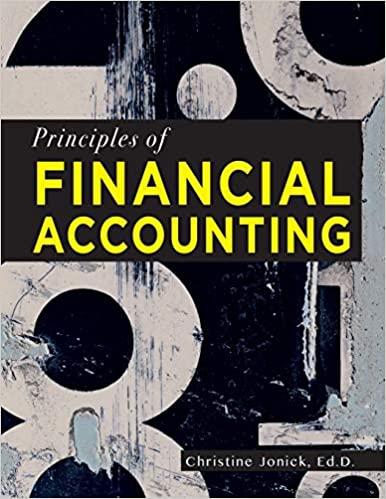Answered step by step
Verified Expert Solution
Question
1 Approved Answer
Question 1 The following are misstatements that might be found in the clients year-end cash balance (assume that the balance sheet date is June 30):
Question 1
The following are misstatements that might be found in the clients year-end cash balance (assume that the balance sheet date is June 30):
1. A check was omitted from the outstanding checklist on the June 30 bank reconciliation. It cleared the bank July 7.
2. A check that was dated June 26 and disbursed in June was not recorded in the cash disbursements journal, but it was included as an outstanding check on June 30.
3. Cash receipts collected on accounts receivable from July 1 to July 5 were included as June 29 and 30 cash receipts.
For each scenario above, please answer each of the questions (in other words, you are responding to both questions below for each scenario above, so you should have 8 responses).
a. Assuming that each of these misstatements was intentional (fraud), state the most likely motivation of the person responsible.
b. List an audit procedure that can be used to discover each fraud.
Question 2
Items 1 through 4 are selected questions typically found in questionnaires used by auditors to obtain an understanding of internal control in the inventory and warehousing cycle. In using the questionnaire for a client, a yes response to a question indicates a possible internal control, whereas a no indicates a potential deficiency.
1. Is a detailed perpetual inventory master file maintained for raw materials?
2. Are physical inventory counts made by someone other than storekeepers and those responsible for maintaining the perpetual inventory master file?
3. Is all inventory stored under the control of an inventory custodian in areas where access is limited?
For each scenario above, please answer each of the questions (in other words, you are responding to all three questions below for each scenario above, so you should have 9 responses).
a. For each of the preceding questions, state the purpose of the internal control.
b. For each of the preceding questions, identify the nature of the potential financial misstatement(s) if the control is not in effect/effective.
c. For each of the potential misstatements in part b above, list a substantive audit procedure to determine whether a material misstatement exists.
Question 3
Following are audit procedures commonly performed in the inventory and warehousing cycle for a manufacturing company:
1. Read the clients physical inventory instructions and observe whether they are being followed by those responsible for counting the inventory.
2. Compare the clients count of physical inventory at an interim date with the perpetual inventory master file.
3. Trace the auditors test counts recorded in the audit files to the final inventory compilation and compare the tag number, description, and quantity.
4. Compare the unit price on the final inventory summary with vendors invoices.
5. Account for a sequence of raw material requisitions and examine each requisition for an authorized approval.
For each scenario above, please answer each of the questions (in other words, you are responding to both questions below for each scenario above, so you should have 12 responses).
a. Identify whether each of the procedures is primarily a test of control or a substantive test.
b. State the purpose(s) of each of the procedures.
Question 4
The following are common tests of details of balances for the audit of accounts receivable:
1. Trace 35 accounts to the accounts receivable master file for name, amount, and age categories.
2. Examine and document cash receipts on accounts receivable for 20 days after the engagement date.
3. Request 25 positive and 65 negative confirmations of accounts receivable.
4. Perform alternative procedures on accounts not responding to second requests by examining subsequent cash receipts documentation and shipping reports or sales invoices.
5. Evaluate the materiality of credit balances in the aged trial balance.
For each audit procedure, identify the balance-related audit objective or objectives it partially or fully satisfies.
Step by Step Solution
There are 3 Steps involved in it
Step: 1

Get Instant Access to Expert-Tailored Solutions
See step-by-step solutions with expert insights and AI powered tools for academic success
Step: 2

Step: 3

Ace Your Homework with AI
Get the answers you need in no time with our AI-driven, step-by-step assistance
Get Started


